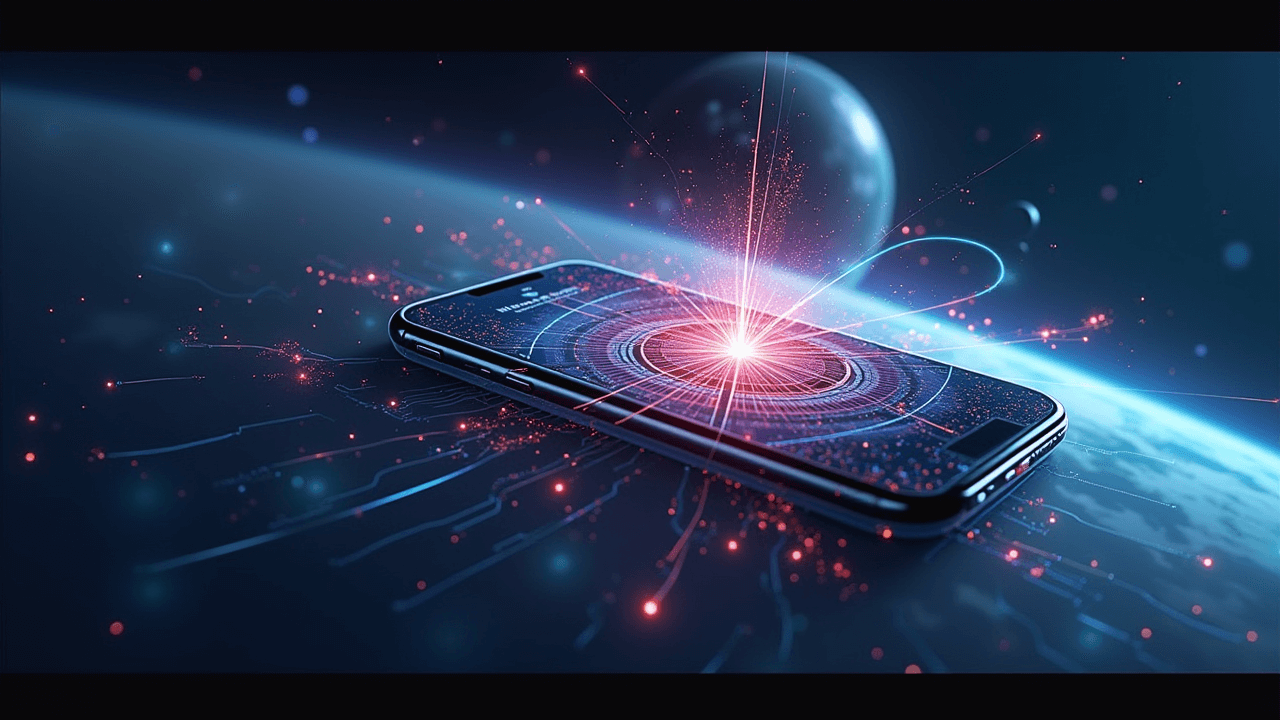Alright, so today, let’s take a deep dive into something we probably don’t think about much but use every single day. How do our phones actually know where north is? It’s not like there’s a little compass needle jammed in there, right? And we’ve got some really fascinating material to help us unpack how these teeny, tiny sensors—magnetometers—actually work.
How Do Phones Sense Magnetism?
It’s pretty amazing when you think about it. We’re talking about a sensor that can be smaller than a grain of rice, able to tap into the Earth’s magnetic field—this force that people have been using to navigate for centuries. It’s easy to take for granted because it’s just there on our phones, but there’s some serious tech going on behind the scenes.
The Hall Effect
So, to start us off, how can a phone even sense magnetism? Basically, it all comes down to a physics principle called the Hall effect. Now, it might sound kind of intimidating, but it’s actually pretty straightforward. Imagine a stream of electrons—so basically electricity—flowing through a wire. When you bring a magnet close to that wire, it’s almost as if that magnetic field is nudging those electrons, pushing them slightly off their path. This creates a measurable voltage difference across the wire, and that right there is the Hall effect.
So, we measure how much those electrons are getting jostled around, and that tells us the strength and direction of the magnetic field. Exactly! And the really cool thing about the Hall effect is that it allows us to create these incredibly small sensors—these micro magnetometers—that are so sensitive they can detect even really subtle variations in magnetic fields. Which is perfect for a phone because the Earth’s magnetic field is not that strong, right?
Micro Magnetometers in Action
Exactly. Compared to like a refrigerator magnet, it’s weak, so you need a really sensitive instrument, and that’s what these micro magnetometers do. And here’s something else that’s really neat: unlike a traditional compass that has to rotate horizontally, these micro magnetometers work in three dimensions.
Three-Dimensional Sensing
So it doesn’t matter how you’re holding your phone—sideways, upside down—it just knows. It can figure out which way is north. That’s wild. We’ve basically given our phones a sixth sense—a magnetic one at that.
Beyond Just Directions
But I’m guessing this tiny little sensor can do way more than just directions, right? Oh, absolutely. Anything that involves magnetism, even on a tiny scale, can potentially use a magnetometer.
Applications in Geology
One really fascinating application is in geology. You know how scientists are able to create those incredible pictures of what the Earth’s interior looks like—with all the different layers, all the way down to the core? Well, magnetometers are a key part of how they do that. By looking at variations in the Earth’s magnetic field, geologists can figure out what those rocks deep beneath the surface are made of and how they’re moving. It’s like giving them X-ray vision, but for the Earth.
So they’re helping us understand our planet on a huge scale. We’ve gone from basic compasses to mapping the Earth’s core, and it’s all thanks to this invisible force of magnetism, which is kind of wild when you think about it.
Magnetic Interference
But you know what gets me thinking? Those magnetic phone holders that people use in their cars. Are we messing up our phone’s compass by putting it right next to a magnet?
Phone Holders and Magnets
That’s a great question. And yeah, those magnets can definitely mess with your phone’s compass, cause some interference. But your phone’s actually okay.
Calibrating Your Phone’s Compass
But how does it know the difference? Well, it’s really kind of clever. It uses software and a really clever trick. You know how sometimes your phone asks you to move it in a figure-eight pattern? I always thought that was a little much, honestly. It seems a little strange, yeah, but that figure-eight—what it’s doing is mapping out the magnetic field around your phone. So by moving it around in all these different directions, the phone can figure out, “Okay, this magnetic force is constant—that’s probably the Earth—and these other ones are coming from maybe the metal in your car or your phone holder.”
So it’s like teaching the phone to ignore the magnetic noise and focus on the Earth’s magnetic field. Exactly. It’s filtering that out so it can give you an accurate reading. It makes your phone a much more accurate compass.
Experiencing Magnetic Forces Firsthand
Now I kind of want to see this magnetic interference in action. Is there any way to really see that happening? There is! You know how some rocks are naturally magnetic, like lodestones?
Lodestones and Natural Magnets
Oh yeah, those are so cool. It’s like they have a little piece of the Earth’s core inside of them. Exactly. If you hold your phone with its compass app open near a lodestone or another strongly magnetic rock, you’ll actually see the compass go a little crazy. No way, really? Yeah, it’s pretty cool.
I’m gonna have to try that. It’s a fun way to see this force. Usually, we think of magnetism as invisible, but this is a way you can actually see it happening. You can see how strong it is as it’s messing with the sensor, basically interfering with it. But it won’t hurt my phone? It won’t hurt it, no, don’t worry about that. It’s just a temporary interference.
A Connection to the Natural World
That’s amazing. We’ve come a long way from navigating by the stars. We really have, although I guess, in a way, our phones are still using those cosmic forces. That’s a really interesting way to think about it. Even though we’ve developed all this incredible technology, it’s still all connected.
Yeah, we’re still relying on those fundamental forces of the universe. It’s kind of poetic when you think about it like that. It really is. It makes you think about how you open up your phone, use your compass, and don’t even think twice about it. But there’s this whole incredible technology in there connecting us to the planet in ways that most of us don’t even realize.
It’s a good reminder that even though we live in this digital world, we’re still a part of the natural world, and we’re still governed by its forces. Exactly. So next time we’re using our phones to get somewhere, maybe take a second to think about that tiny little sensor in there, doing its thing—silently tapping into the Earth’s magnetic field, a force that’s been guiding us for all of human history. That’s kind of cool.
And who knows, maybe someday soon we’ll use these same ideas to navigate space—not just our planet. Now that’s something to think about. From this tiny little sensor to the farthest reaches of space, it’s amazing what we can do with a little ingenuity and a deeper understanding of how things work.
FAQ
How do phones detect the Earth’s magnetic field?
Phones use tiny sensors called magnetometers, which rely on the Hall effect. When electrons flow through a wire and are exposed to a magnetic field, they get pushed slightly off their path, creating a measurable voltage difference. This allows the phone to detect the strength and direction of magnetic fields.
Does a magnetic phone holder interfere with my phone’s compass?
Yes, magnetic phone holders can cause interference with your phone’s compass. However, your phone can recalibrate using software tricks, like asking you to move it in a figure-eight pattern to map out and filter out local magnetic noise.
Why does my phone ask me to move it in a figure-eight pattern?
Moving your phone in a figure-eight pattern helps it calibrate the magnetometer by mapping out the surrounding magnetic field. This process allows the phone to distinguish between the Earth’s magnetic field and other magnetic sources nearby, improving compass accuracy.
Can natural magnets like lodestones affect my phone’s compass?
Absolutely! Holding a lodestone or any strong magnet near your phone can cause the compass to behave erratically. It’s a fun way to observe magnetic interference, but don’t worry—it won’t harm your phone.
What other applications do magnetometers have besides navigation?
Magnetometers are used in various fields beyond navigation. In geology, they’re essential for mapping the Earth’s interior by detecting variations in the magnetic field. This helps scientists understand the composition and movement of rocks deep beneath the surface.
Your Hosts

Alex & Maria
Join Alex Thompson and Maria Davis as they navigate the fascinating world of knowledge. With their combined expertise and passion for learning, they simplify the complex and make every episode a journey worth taking.

